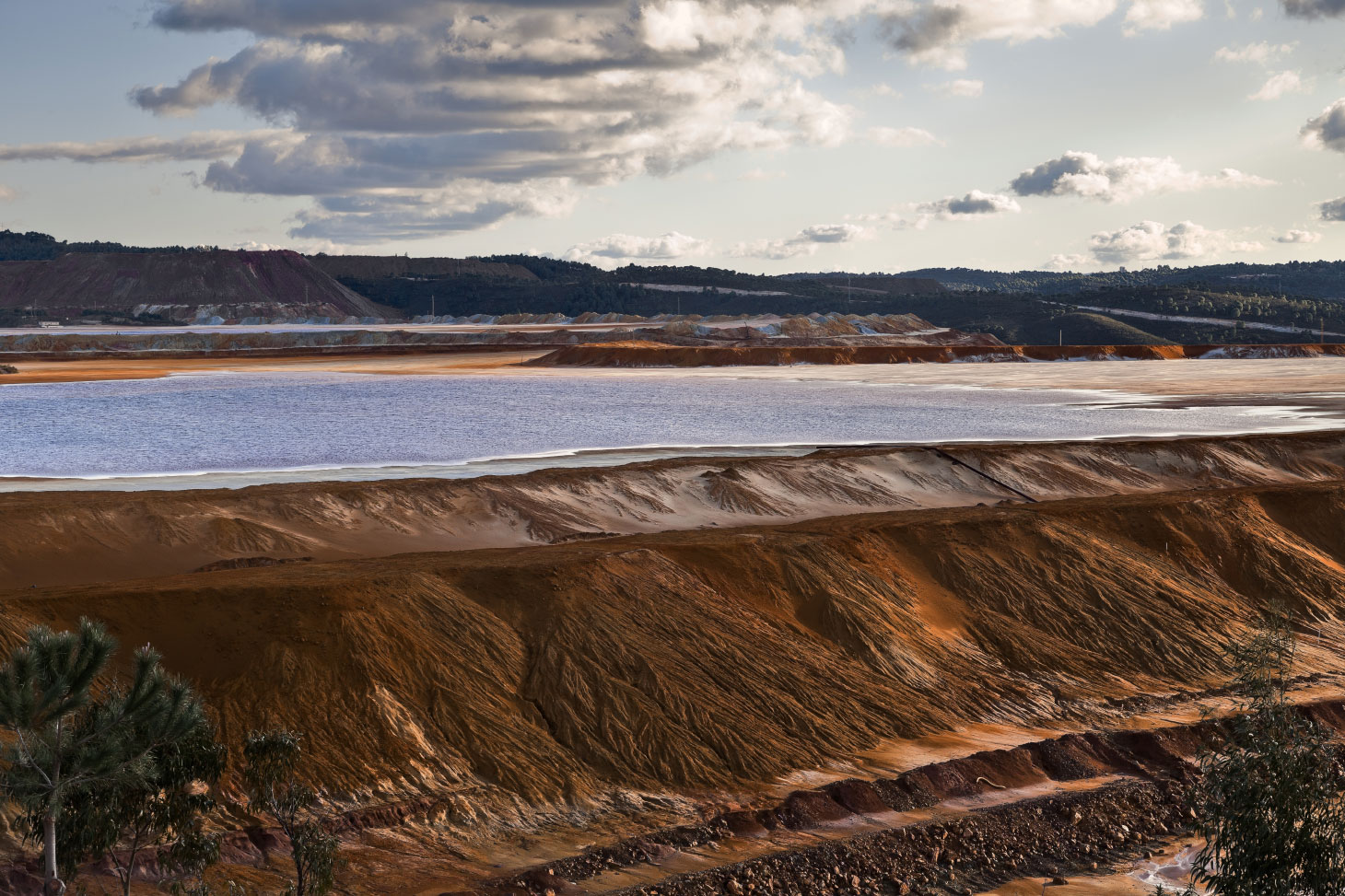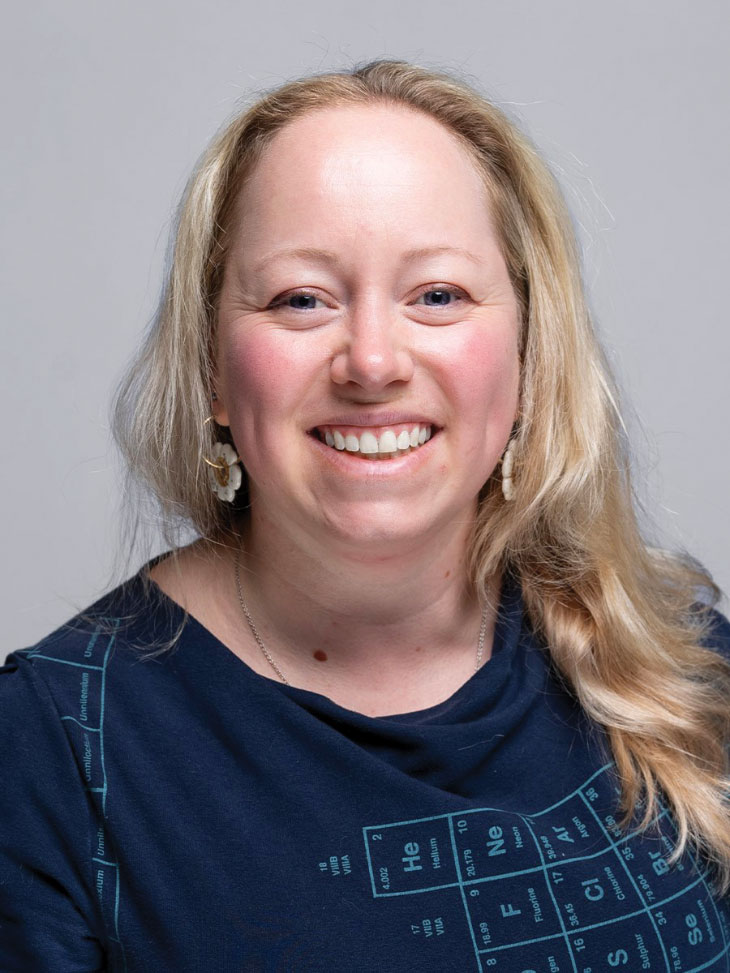
With a 17-year career in geotechnical, environmental and civil design – and a strong focus on tailings and environmental engineering – Robyn Gaebel, P.Eng., senior geotechnical engineer at Geosyntec Consultants, has built a reputation for thriving in high-pressure, deadline-driven environments.
Piling Canada invited Gaebel to discuss her career and her perspective on the evolving demands of the geotechnical field.
Can you tell me about your career journey, including how you got started in engineering?
Robyn Gaebel (RG): I’ve always been interested in the environment and how we build within it. My parents were very supportive, and from a young age I was drawn to both natural systems and large-scale construction. I was curious about how the built and natural environments interact, and that curiosity led me into engineering.
Was there a defining moment or project early in your career that helped shape your professional direction?

RG: I was lucky to land an internship in Alberta between my third and fourth year of university, working on construction quality assurance and control. That experience sparked my interest in embankment construction and fieldwork. I enjoyed being close to the action and seeing how design decisions play out in the real world, and it helped shape much of my career direction.
You’ve worked across consulting, operations and environmental engineering. How have those different roles shaped your approach to project delivery?
RG: At the core, I don’t think project delivery changes much across roles. Whether in consulting or operations, it still comes down to communication, project management and building strong relationships. Technical skills matter, but soft skills like listening, adaptability and trust are often what determine a project’s success.
What are the biggest shifts you’ve seen in the geotechnical or environmental engineering fields since you started?
RG: AI is starting to change how we approach data and design, and it’s a shift we’re all navigating. On the environmental side, public awareness and evolving regulations have brought more scrutiny and a broader scope of work, which has expanded the field significantly.
Are there any key lessons or turning points that significantly influenced how you lead or manage projects now?
RG: I’ve had both good and difficult working relationships over the years. That includes managers, clients and peers. Those experiences taught me the value of clear, honest communication and shaped how I lead today. I try to manage in the way I’d want to be managed – supportive, direct and open.
What types of projects do you most enjoy working on, and why?
RG: I love projects with a field component. I’m happiest when I can get out and see how things are built. I also enjoy larger construction projects because of their complexity and the opportunity to work closely with different teams.
Are there any particular projects that stand out as the most technically challenging or the most rewarding?
RG: There’s a project I’ve been working on for the last eight years and it’s very exciting, and I’m lucky that Geosyntec has been willing to sponsor my research to advance it recently. We’re looking at using pulp and paper waste from pulp mills as a liner material in industrial waste storage facilities. It’s naturally basic so it helps offset acid generation in the early stage of deposition, it’s nearly impervious to water flow when compacted correctly and it’s abundantly available in towns around Canada as a waste product the mills want to get rid of. There are challenge with it, and I’m not going to say it’s an easy solution, but it’s an exciting opportunity that demonstrates how waste from one industry has potential as a solution in another.
How do you approach balancing field realities with technical precision in your work?
RG: Designs often evolve in the field, so I focus on building in flexibility. Tools like deviation logs help track changes, and I make sure the team has the technical support to adapt as conditions shift. It’s about being responsive and collaborating with the field team.
What are some unique considerations when working on tailings or closure management projects?
RG: Each site is unique. Even with the same commodity, no two facilities behave the same. Facilities evolve over time, so staying connected with operations and maintaining regular field visits is essential to understanding and responding to those changes.
How do you integrate sustainability or long-term resilience into your engineering decisions?
RG: I look for opportunities to apply the best available technologies and practices, always in the context of the site. That might mean reducing water use, improving energy efficiency or choosing materials with a longer lifespan. It’s about finding what’s feasible while still moving the needle.
“Having someone in your corner to talk through challenges and opportunities is invaluable.”
Robyn Gaebel, P.Eng.
How would you describe your leadership style when managing teams or mentoring junior engineers?
RG: I try to be approachable and supportive, with open communication at the core. My goal is to give people space to grow while knowing they can come to me when they need support. It’s a hands-off style, but never absent.
What’s your approach to helping others deliver on their responsibilities and grow in their roles?
RG: I focus on setting clear expectations and creating space for feedback. Growth happens when people feel trusted and challenged, but also when they know help is available if they hit a roadblock.
How do you navigate projects that involve a high level of complexity or inter-disciplinary co-ordination?
RG: Start with clarity. Run early kickoffs, set well-defined roles and make sure everyone knows who’s on the team. Then keep the momentum with regular check-ins and plenty of opportunities for cross-discipline conversations. Communication makes or breaks a complex project.
What qualities make someone a strong project manager in high-stakes engineering environments?
RG: Strong communication is key, but so is adaptability. Things rarely go exactly as planned, so creativity, calm under pressure and a bit of improvisation go a long way. Being organized certainly helps too.
What motivates you most about the work you do today?
RG: The people. Tailings engineering isn’t exactly glamorous, so it tends to draw in people that are passionate about it. I also enjoy the variety because every project is different. The travel and the team dynamic keep it interesting, and I find the work meaningful and exciting.
How do you handle pressure or tight deadlines, and has your approach changed over the years?
RG: Planning and organization are still my go-tos, but over time I’ve learned that sometimes you just have to roll with it. When it’s too much, a short break, a walk, a tea or watering plants for five minutes can help reset and get me back on track. It’s about finding balance and being realistic about what you can do.
How do you continue learning and growing in your career after nearly two decades in the field?
RG: Conversations are a big part of how I learn. I love hearing what others are working on. I also make time for conferences, workshops and webinars to stay current with technical trends. LinkedIn has been a surprisingly useful tool for staying connected to people and ideas in the industry.
What advice would you give to women pursuing careers in geotechnical or environmental engineering?
RG: Find a mentor. Having someone in your corner to talk through challenges and opportunities is invaluable. My mentors have helped me through some tough moments and I’ve come out stronger because of it. Additionally, engage with the community by taking on volunteer roles within organizations to the extent that you can. I serve on the investigation committee for Engineers and Geoscientists of British Columbia and as treasurer on the board of directors for the Vancouver Orchid Society. These roles have provided me with valuable opportunities to expand my network and develop essential soft skills.
What’s something people might be surprised to learn about your work or your professional journey?
RG: That it’s been a lot of fun! I still really enjoy what I do and feel lucky to be in a field that’s both challenging and rewarding. It’s a great career path.
Is there anything else you would like to add that hasn’t been covered in the previous questions?
RG: I know that most of your readers may not be aware of how big of a world tailings management is, but it’s only growing and there’s always a need for more people. Tailings are a necessary part of the mining industry, and if we as a society want to build buildings, cars, computers or anything else, it’s a challenge that isn’t going away. It’s a long-term environmental hazard if not managed correctly. We get to work on projects from an early stage before construction – designing dams to be stable for 1,000 years – to being some of the last people working on projects long after a mine has closed.